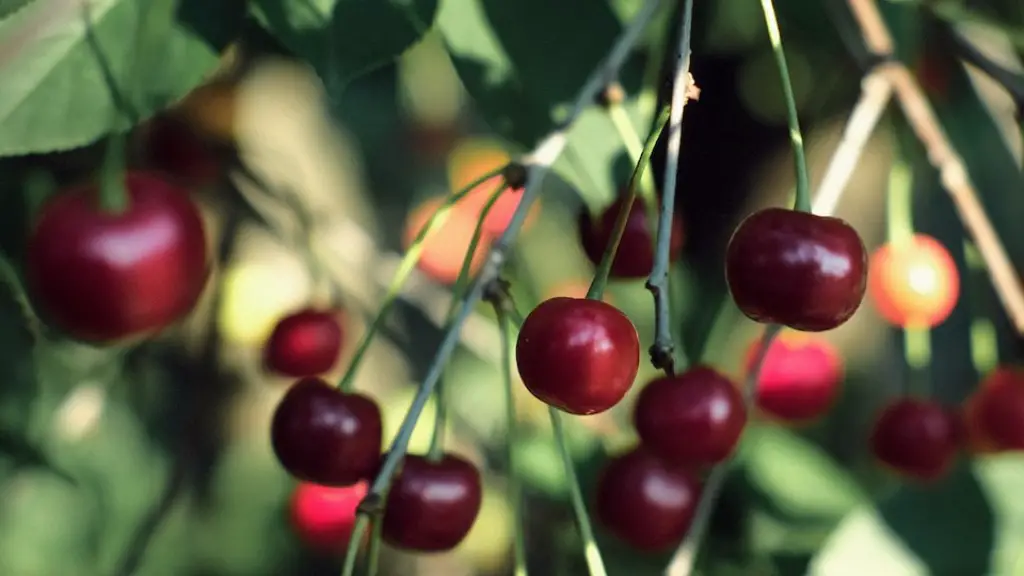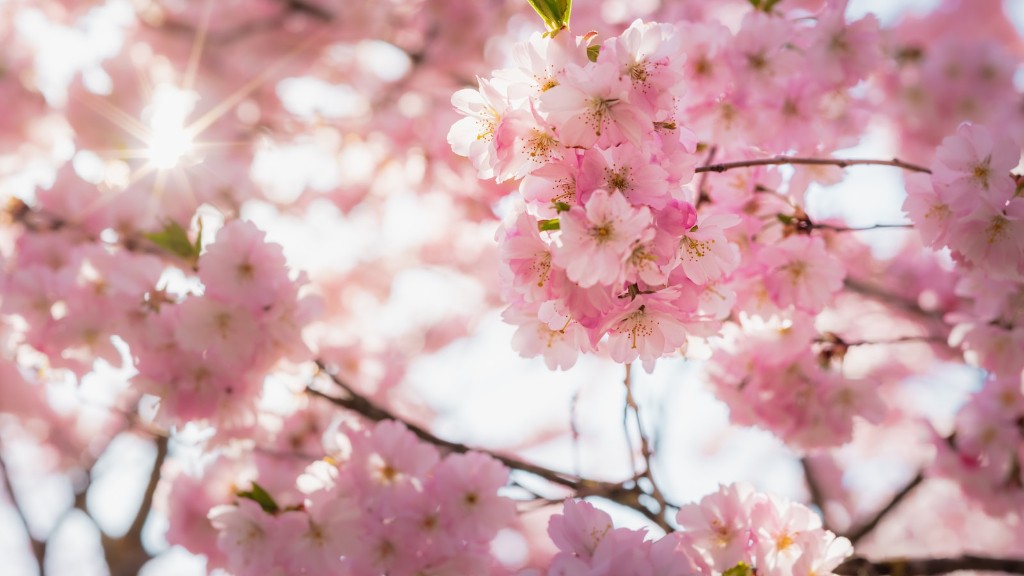Water
Cherry trees need plenty of water to remain healthy and productive. Deep, consistent watering is important, especially during hot summers and during flowering and fruiting season. It is best to let cherry trees slowly absorb a deep watering once per week, rather than closely spaced, shallow sessions. During drought conditions, cherry trees should receive supplemental water, as lack of water can cause problems with the fruit, like cracking or uneven ripening. Professionals recommend an irrigation system for cherry trees, including soaker hoses or drip irrigation, to ensure consistent and deep enough watering.
Pruning
Cherry trees should be pruned twice a year: in late winter when trees are dormant and in late summer once the fruit has been harvested. Pruning should be done in a three-year cycle; the first year remove a few branches, the second year remove a few more and so on. Pruning should shape the tree and remove any dead, diseased, rubbing or crowded branches. Pruning can also help in reducing insect and disease infestation in cherry trees, as well as preventing any branches from growing too long.
Fertilizer
Cherry trees require regular fertilization in order to produce healthy, delicious fruits. Generally, cherry trees should be fertilized once a year in the early spring time with a special fertilizer for trees. If the soil test reveals that the soil lacks essential nutrients, then fertilizer may have to be applied in the late summer time as well. In either case, fertilizer should be applied evenly and spread at least 8 inches away from the trunk. A layer of mulch should also be added around the tree to help retain moisture and slow down weeds and grass growth.
Insect and Disease Control
Cherry trees can be susceptible to insect and disease infestations. To protect them, regularly check and monitor the tree for pests and diseases. If any are detected, it is important to take immediate action and use the appropriate chemical and biological controls. Planting disease resistant varieties in the right climate can also help reduce the chances of disease.
Planting
When planting a cherry tree, it’s important to select a sheltered spot with well-draining soil so that the tree can be as successful as possible. The soil should be light and sandy, not clay and heavy. If the soil contains a lot of clay, some organic matter should be added to the area to help improve the drainage.
Sun and Shade
Cherry trees grow best in full sun, with at least 6 hours of direct sunlight everyday. If the location doesn’t provide this, you may need to prune away some of the overhanging branches to allow more light to reach the tree. You should also be aware of nearby trees that could interfere with the growth and yield of the cherry tree by shading it during certain times of day.
Temperature Regulation
Cherry trees need protection from extreme temperatures, both in hot and cold weather. The trees should be protected from strong winds, frost and sudden cold snaps. In hot weather, a good watering regime should be followed to ensure the tree is hydrated. Covering the tree with a white plastic sheet can also help reflect the sun and prevent heat damage.
Insect and Disease Prevention
Good insect and disease prevention measures can help maintain a healthy cherry tree and protect it from infestations. Applying an insecticide or fungicide from time to time can help reduce the chances of pests and diseases. Maintaining good hygiene around the garden, such as disposing of any rotten fruit and cleaning up regular debris, can also help prevent any infestations.
Correct Pruning Techniques
Incorrect pruning techniques can cause serious damage to a cherry tree and prevent it from producing healthy fruits. It is important to use the correct tools and techniques to ensure correct and safe pruning. Professionals recommend using specialist pruning tools and sharp shears, and pruning at certain times of year. Cutting back flowing shoots to two or three buds, or removing broken and diseased branches, can help keep the tree healthy and productive.
Disease Diagnosis
If your cherry tree does end up affected by a disease or pest, it is important to diagnose the problem and take remedial action. Poultry scab and brown rot can cause serious problems for cherry tree health and should be addressed as soon as possible. Consulting with a professional can help you identify the problem and develop an appropriate plan for recovery.
Fertilization Consumption
Cherry trees have different fertilization requirements based on the type of tree, its age and size, and the soil type in its location. Applying too much nitrogen to the tree can cause excessive branch growth, while too little nitrogen can starve the tree and reduce the yield. Soil tests should be carried out at least once per year to make sure the correct amount of nutrients are applied to the tree.
Soil Maintenance
Cherry trees need well-draining, light soils in order to thrive and produce a bounty of delicious fruits. Regularly testing the soil to make sure it has the right pH balance and nutrient levels is important. Compacted or clay soils should be loosened with the addition of organic matter, such as bark or compost, and then tested again.
Pest Control
Cherry trees are susceptible to several pests, including aphids, borers, scale, and plum curculio. Keeping a close eye on the tree for insect infestations and acting quickly is important. Spraying with a commercial insecticidal soap or horticultural oil can help control many insect pests and should be applied as necessary and according to the manufacturer’s instructions.
Harvesting
When it is time to harvest the fruit, the cherries should be picked when they are ripe and full. If the fruit is left to mature on the tree, they will become soft and susceptible to rot. Each cherry should be picked individually and not stripped from the branch, as this can damage the branch and cause further problems. The cherries should then be left to ripen further before being enjoyed as food.


